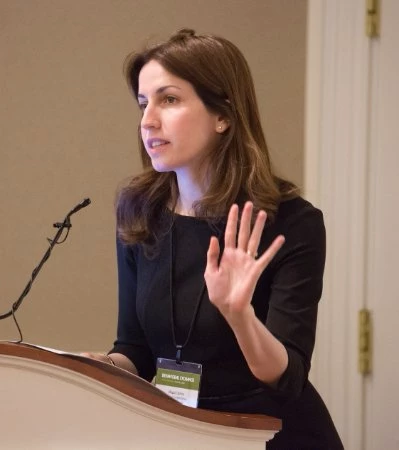 ©World Bank / Simone D. McCourtie
©World Bank / Simone D. McCourtie
For staff at international organizations like the World Bank, overcoming shocks such as the COVID-19 pandemic and rising levels of violence and fragility present unique opportunities for innovative operations and responsive policymaking. Tools and lessons from behavioral insights continue to expand as promising strategies for stakeholders seeking to tackle seemingly intractable problems. And we’re not alone in using this field to enhance the effectiveness of our projects; colleagues from international organizations globally – from the United Nations (UN), to the Inter-American Development Bank (IDB), to the Organisation for Economic Co-operation and Development (OECD) and more – have been actively applying behavioral science to their work across regions and themes. The lessons of their efforts to date can help us serve our clients even more successfully.
Behavioral Science Around the World: Volume II, a new World Bank report, highlights a sample of institutions that integrate behavioral science into their quest for impact. The production and publication of this report come alongside a new normal dictated by the COVID-19 pandemic. As restrictions on human interaction and other “regular” behaviors are necessitated, the report’s historical and current examples of flexible and adaptive behavioral solutions can provide strategies to mitigate short-and long-term impacts of the pandemic.
For example, healthcare interventions rooted in behavioral insights have led to significant results in encouraging and enforcing positive health-seeking behaviors and habits. The IDB’s experiment of sending reminders to improve vaccination rates in Guatemala and United States Agency for International Development’s (USAID) use of radio broadcasts to promote bednets to lower malaria infections in Nigeria both saw success. USAID is also promoting positive behaviors related to stunting reduction through community outreach programming in Vietnam. Equally important, especially in the face of crises, are mental health interventions. The United Nations Children's Fund (UNICEF) highlights their on-going work around Human-Centered Design and behavioral data collection to manage immunizations and outbreaks.
Seventeen global organizations—from governmental agencies and development banks to think tanks and humanitarian organizations— share insights and successes in using behavioral science. Some are blending current lessons from behavioral science with decades of work in social and behavior change communications. Others have recently completed their first behavioral research projects or have a handful of early stage efforts underway. An increasing number of the organizations featured have a formal mandate or soon-to-be formal structure for applying behavioral science to their portfolios. This includes the World Bank’s Mind, Behavior, and Development Unit (eMBeD), established in 2015 to diagnose, design, and evaluate behaviorally informed interventions. Collectively, all reinforce the important lesson that while solutions based on human behavior may involve a consistent set of underlying principles, the approach is not “one-size-fits-all.”
Historically, programs based in behavioral insights have been implemented to increase financial well-being, especially in higher-income contexts. This new report compiles additional evidence across income strata. Examples of interest include the European Commission’s work on behaviorally informed remedies to increase consumer willingness to shop around and/or switch their current account or mortgage. In Niger, the World Bank’s Africa Gender Innovation Lab (GIL) is testing if lockboxes and text-message reminders help families plan their expenses and meet their savings goals. And eMBeD has led a number of projects looking at improving domestic revenue mobilization. This includes work on tax compliance in partnership with Deutsche Gesellschaft für Internationale Zusammenarbeit GmbH (GIZ) in Kosovo, where behaviorally informed reminders encourage timely and honest tax declarations and payments.
Also pressing in light of COVID-19 and global trends more broadly is the need for creative strategies to reduce increasing domestic and community violence. The report suggests existing success from behavioral science in this realm. For example, decreasing intimate partner violence has been seen from two programs by the International Rescue Committee (IRC). This includes “Modern Man,” which delivers bite-sized, engaging content challenging toxic masculinity via SMS and WhatsApp, and “Becoming One,” a counseling program for couples delivered in partnership with faith leaders. The International Committee of the Red Cross (ICRC) works to tackle violence against healthcare—both patients and personnel—in conflict settings. These efforts include a behavior change communications campaign centered on building awareness that doctors should not be persecuted for providing non-discriminatory care in times of conflict.
En masse, Behavioral Science Around the World: Volume II features over 160 examples of experiments, projects, events, trainings, and publications demonstrating that behavioral science continues to be a powerful tool for confronting economic and social difficulties. We hope this report can guide leaders, institutions, and organizations to understand how behavioral science may be integrated into organizational structure, which themes others are already working on, and, perhaps most importantly, where they have seen success.
Note: Behavioral Science Around the World: Volume II is produced by the World Bank’s Mind, Behavior, and Development Unit (eMBeD). Read more about them here (Insert link). This report follows 2018’s Behavioral Science Around the World: Profiles of 10 Countries (PDF), which highlighted the emergence of country-specific, government-led behavioral units.



Join the Conversation